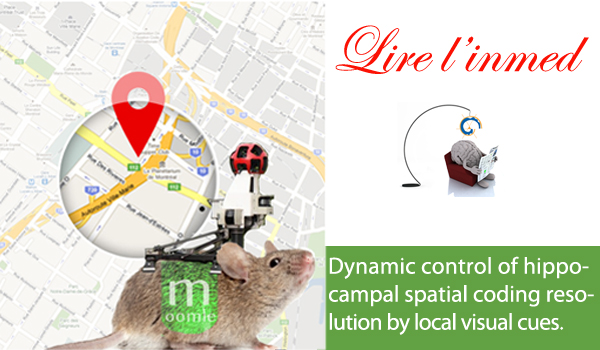Life on Map. Nowadays technologies allow projecting our life on a map with more and more information such as location of favorite spots, activities, relatives, traffic, etc… Such unique maps are also created in our brain, in CA1 hippocampus. Indeed, here the authors show that enriching a virtual environment with 3D objects increases the resolution and robustness of hippocampal cell place fields, which encode space, at the exact location of these objects. This effect is highly dynamic allowing an instantaneous update of maps according to a changing environment and, perhaps, to the owner’s state of mind. (by Ingrid Bureau)
Authors: R. Bourboulou*, G. Marti*, F.-X. Michon, E. El Feghaly, M. Nouguier, D. Robbe, J. Koenig and J. Epsztein
Scientific abstract: The ability to flexibly navigate an environment relies on a hippocampal-dependent cognitive map. External space can be internally mapped at different spatial resolutions. However, whether hippocampal spatial coding resolution can rapidly adapt to local features of an environment remains unclear. To explore this possibility, we recorded the firing of hippocampal neurons in mice navigating virtual reality environments, embedding or not local visual cues (virtual 3D objects) in specific locations. Virtual objects enhanced sptial coding resolution in their vicinity with a higher proportion of place cells, smaller place fields, increased spatial selectivity and stability. This effect was highly dynamic upon objects manipulations. Objects also improved temporal coding resolution through improved theta phase precession and theta timescale spike coordination. we propose that the fast adaptation of hippocampal spatial coding resolution to local features of an environment could be relevant for large-scale navigation.
Published in elife, March 2019
See more of the work of the team here

